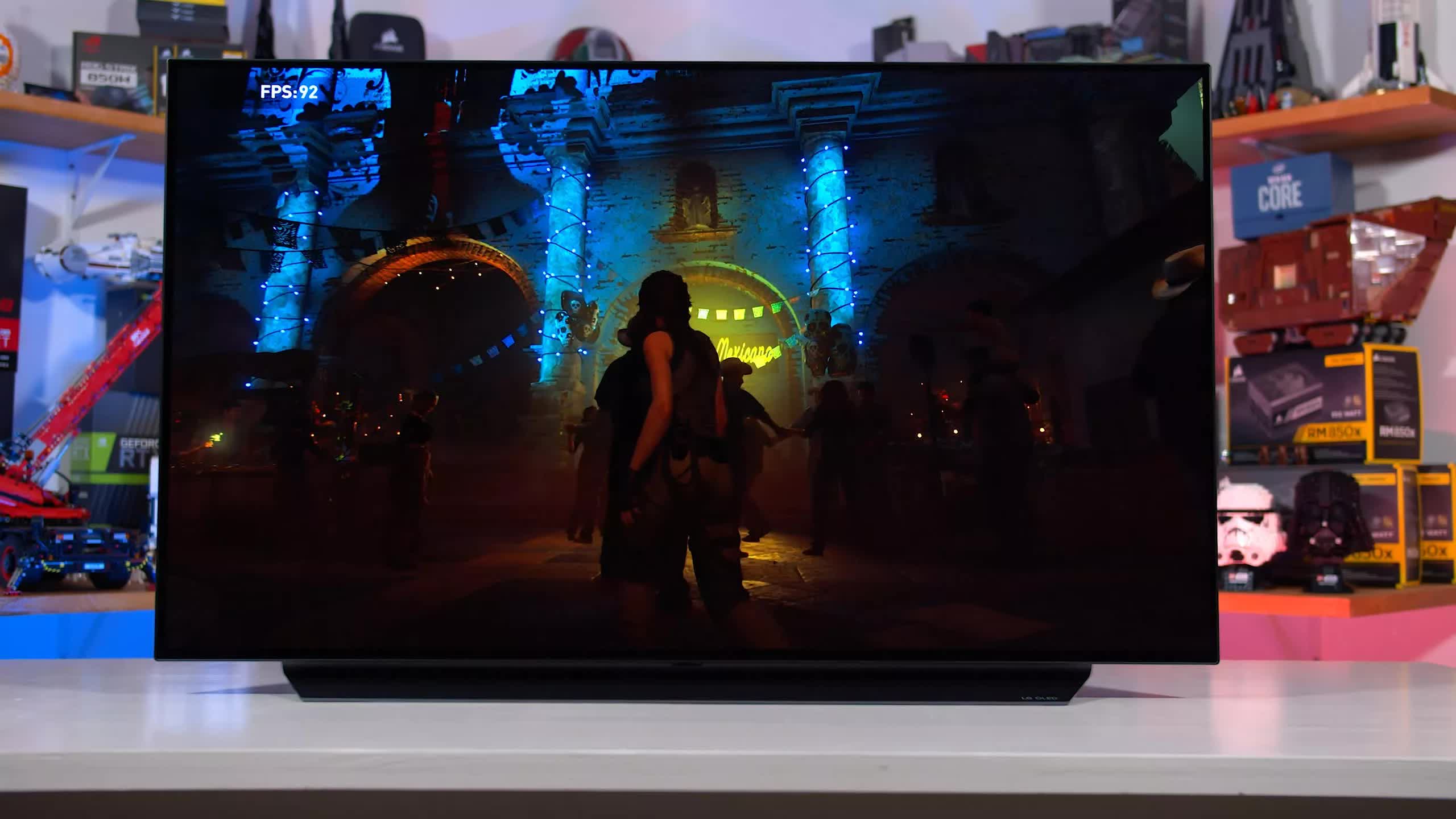See our latest update to this buying guide: The Best Gaming Monitors
Having reviewed several 4K monitors this year, it's time to round them up and choose what the best options are in this category and display resolution. The 4K segment has really evolved in 2021, with more options than ever before, more affordable models that are worth buying, and crucial new categories like high-refresh 32-inch displays.
But before getting into our picks, we should briefly discuss whether you should buy a 4K monitor or not. There are lots of monitor categories these days and perhaps there might be something more suitable for you.
For most PC gamers, we still believe you should probably choose 1440p over 4K right now. 1440p medium refresh monitors around the 144Hz mark are much cheaper than 4K equivalents, and there are more options to choose from. Alternatively, if you want to go high end, 1440p monitors will offer higher refresh rates at the same price than 4K. With current GPU hardware you'll be able to run games at higher frame rates on 1440p, leading to a smoother experience, whereas for a lot of people native 4K gaming is going to be more like 60 FPS or less.
That's not to say there are no reasons to go 4K. Today's high-end GPUs, so the ones in the ballpark of Nvidia's GeForce RTX 3080 and above, are quite capable of 4K gaming, and depending on the title, you might be able to run them at high frame rates. If you do have a powerful gaming rig, then grabbing a 4K high refresh monitor could be the way to go. 4K monitors also make the most sense for console gaming on the PlayStation 5 or Xbox Series X, because these systems target 4K outputs and the PS5 doesn't even support 1440p.
Finally, 4K monitors are great for desktop use, productivity and content creation, so if you want to do that alongside gaming, 4K is the way to go. With the rise of high performance 4K IPS monitors with wide color gamuts, the choices are better than ever. Last but not least, these picks are all about 4K gaming, which means 120Hz refresh is the minimum we're considering. We know some may consider affordable 4K 60Hz displays, but we don't recommend them for gaming.
Best 27-inch 4K Gaming Monitor
Gigabyte M28U 28"
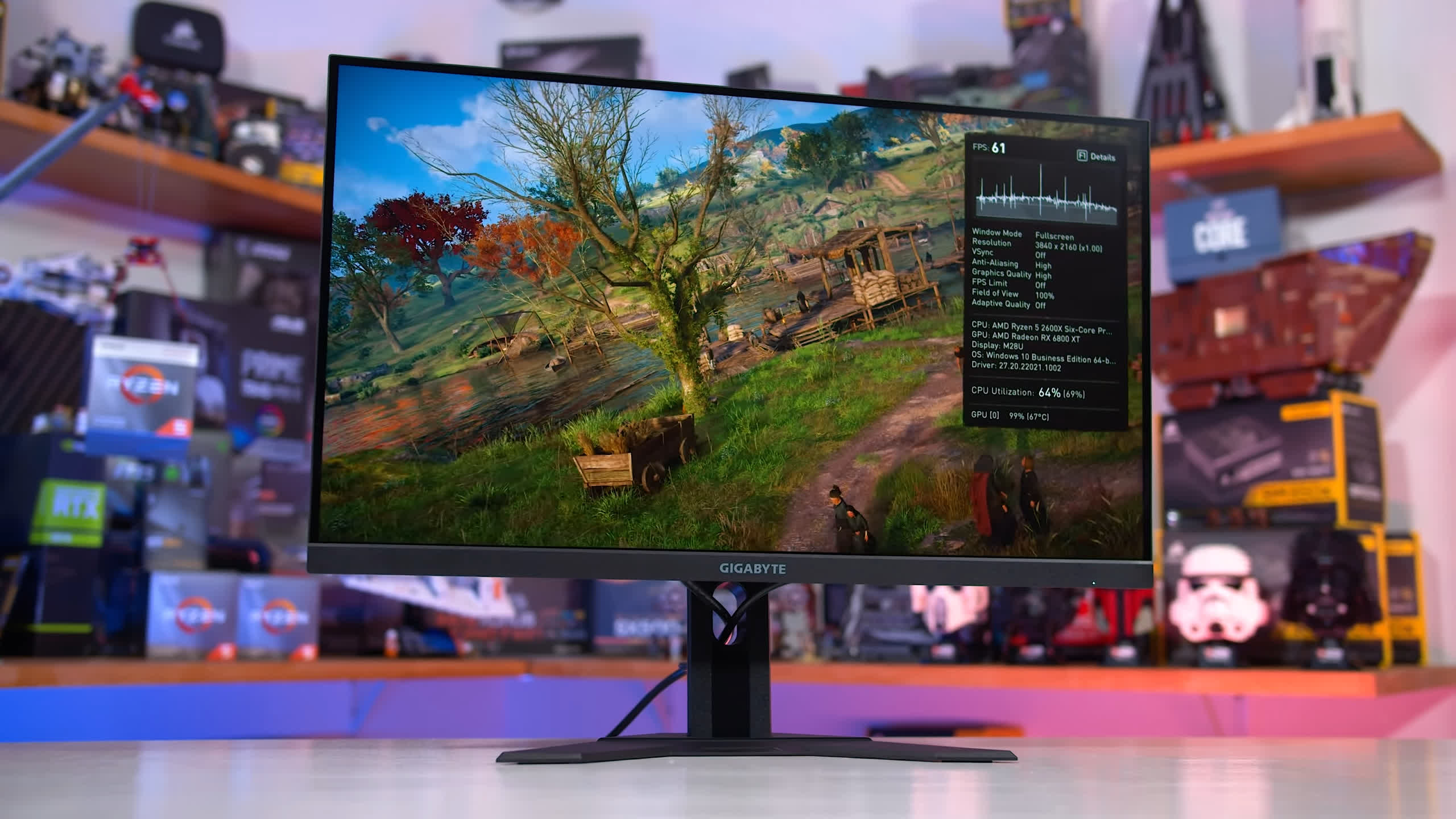
This is the category that's seen the biggest suite of improvements, especially high refresh models that are better performing and more affordable than what was available in years prior. Most of our recommendations from our recent best 4K monitors feature is still relevant today, so we'll keep this one concise and you can always go to the dedicated 4K article for more information if you need it.
Right now we'd split up the 4K choices in two category sizes: 27 and 32-inch, with the expectation of getting at least a 144Hz refresh rate to make them future proof and great for gaming. In the 27-inch category we'd look no further than the Gigabyte M28U, which offers excellent performance at an affordable price point of $650, much lower than previous years' best choices.
The M28U has very good response time performance, with an average transition of 4ms at 144Hz in our testing. It also offers good performance across the refresh range, so for those using adaptive sync variable refresh rates, you don't need to tweak overdrive settings to get the best experience. Color quality is also strong, thanks to its IPS panel, so viewing angles are excellent and it does pack a wide color gamut - though not as wide as the best monitors of today. Factory calibration is above average, there's a good sRGB mode for everyday use, and contrast is typical for an IPS panel. To top it off, Gigabyte includes a KVM switch and a height adjustable stand which are both neat feature additions.
An alternate option might be the Samsung Odyssey G7 S28 model, which is on sale at a similar price and uses the same panel, but we're yet to test it so it doesn't get a recommendation from us yet.
The LG 27GN950, and its newer variant the LG 27GP950, used to be my go-to choices. But I can't justify the $800 to $900 price tag for what ends up being only slightly better performance. The same goes for the Eve Spectrum 4K and Asus TUF Gaming VG28UQL1A.
Larger 32-inch 4K Options
At 32" the quality of monitor offerings isn't as good as it is at 27", however the additional screen real estate is something many people want, and yes, 4K looks great at this size, too.
For most people we'd recommend the Gigabyte M32U, which is the affordable and essentially identically performing version of the Gigabyte Aorus FI32U. This monitor has decent response time performance and color quality, it's not a leader in any one area but I think it will suffice for most buyers as a solid all-rounder. It's also not too expensive, at $800, which is cheaper than most other 32-inch 4K IPS 144Hz monitors.
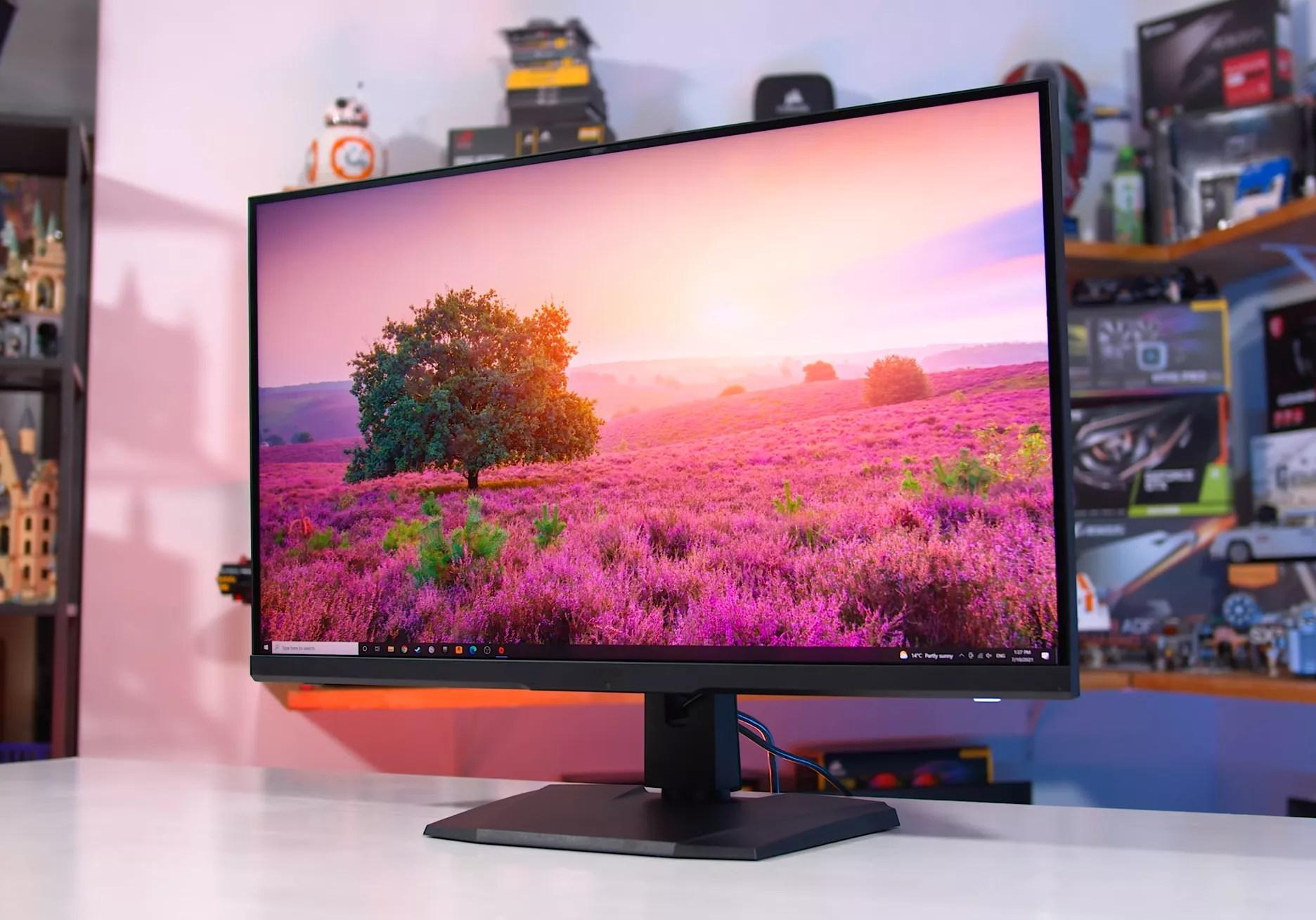
If you want a step up in terms of performance and features, then the MSI Optix MPG321UR-QD is great. Occasionally, we've seen it for as low as $750, down from the usual $900, which is a great deal if you can get it and a clear winner over the M32Q.
It's not as fast as the M32Q and response times aren't its strength, but it makes up for this with excellent color performance including a very wide color gamut, multiple well-calibrated modes for sRGB, P3 and Adobe RGB, full bandwidth HDMI 2.1 and backlight strobing with adaptive sync support simultaneously.
The MSI model is a great choice if you want something decent for productivity and creative work that can still function well as a gaming monitor through its 144Hz refresh rate, while the M32Q is more of a gaming-first option.
If you're buying a 4K high refresh gaming monitor right now, by far the best category to invest into is the 27-inch category. 4K monitors around this size deliver the best performance, and are the most affordable, making them great buys for a wide variety of use cases. But it's also important to grab something from this current generation of 4K panels, otherwise you will be missing out on key features.
One key feature is HDMI 2.1. Only the latest 4K monitors include HDMI 2.1, and honestly I wouldn't consider buying something that doesn't have it. HDMI 2.1 is required for 4K at refresh rates above 60 Hz, so if you have a PC you want to hook up over HDMI, or more crucially, a current-gen game console, then HDMI 2.1 is essential. There are lots of older 4K monitors we haven't considered because they fail this basic check.
The best 27-inch 4K monitor to buy is actually 28 inches in size, and it's the Gigabyte M28U. The M28U is typically available for $600 - $650, making it one of the most affordable 4K 144Hz displays you can buy. This monitor does support HDMI 2.1, but crucially, it's not a run-of-the-mill 4K contender with average performance; the M28U's Innolux panel is one of the best performers we've seen yet in this category.
The Gigabyte M28U has very good response time performance, with an average transition of 4ms at 144Hz. It also has good performance across the refresh range. For those using adaptive sync variable refresh rates, you don't need to tweak overdrive settings to get the best experience. This IPS monitor delivers speed in the ideal range for the latest generation of IPS panels, so there's no funny business going on here for motion performance, and this is complemented with great backlight strobing that works alongside adaptive sync. This is a better package than you get with some of our previous recommendations at 4K, like the LG 27GN950 and 27GP950.
Thanks to the IPS panel, color quality is strong and so are viewing angles, packing a wide color gamut – though not as wide as the best monitors of today. Factory calibration is above average, there's a good sRGB mode for everyday use, and contrast is typical for an IPS panel, no major issues there. To top it all off, Gigabyte includes a KVM switch and a height adjustable stand which are both neat additions.
Also consider...
Those buying a 4K monitor to use with a PlayStation 5, we'd recommend the Asus TUF Gaming VG28UQL1A instead. The Asus is very similar to the M28U, it isn't quite as a strong performer and tends to cost more (about $800), however it has more HDMI 2.1 bandwidth that's more compatible with the PS5, which gives it a leg up.
Also, if you need full DCI-P3 coverage for content creation, the Gigabyte M28U doesn't have the best P3 coverage, even though it's a wide gamut monitor. For this use case, you'll be better off with the more expensive LG 27GP950.
There are several other variants that are quite similar to the Gigabyte M28U because they use the same Innolux 28-inch 4K 144Hz IPS panel, some of which may be worth considering depending on pricing in your region. Also, do note the M28U has terrible HDR performance – it's not really an HDR monitor at all – so if you want proper HDR, that's not the monitor for you. Be aware that getting true HDR will cost you 2x to 3x the MSRP of this monitor. Don't be fooled by fake HDR monitors that add this capability to the spec sheet without including the required hardware.
If you're buying a 4K high refresh gaming monitor right now, by far the best category to invest into is the 27-inch category. 4K monitors around this size deliver the best performance, and are the most affordable, making them great buys for a wide variety of use cases. But it's also important to grab something from the current generation of 4K panels, otherwise you will be missing out on key features.
For most gamers, the 4K monitor that makes the most sense to buy also turns out to be the best value, typically sitting in the $600 to $700 range. Our recommendation hasn't changed since our last guide update. We've reviewed several other 4K monitors since and the Gigabyte M28U still comes out on top from a value perspective.
The M28U has very good response times, with an average transition in our testing of 4ms at 144Hz. It also has very good performance across the refresh range, so for those using adaptive sync variable refresh rates, you don't need to tweak overdrive settings to get the best experience. This IPS monitor delivers speed in the ideal range for the latest generation of IPS panels, this is complemented with great backlight strobing that works alongside adaptive sync. We get HDMI 2.1 support, which is essential when buying a new 4K monitor in 2022 – not all monitors have this feature, so make sure to get one that does.
The Gigabyte's color quality is strong, viewing angles are excellent and it does pack a wide color gamut – though not as wide as the best monitors of today. Factory calibration is above average, there's a good sRGB mode for everyday use, and contrast is typical for an IPS panel. To top it all off, Gigabyte includes a KVM switch and a height adjustable stand which are both neat feature additions.
There are a few worthy alternatives that we should also mention. The M28U is not an HDR monitor, so if you want proper HDR just be aware that getting true HDR will cost you 2x-3x the MSRP of this monitor, don't be fooled by fake HDR monitors that add it to the spec sheet without including the required hardware.
For PS5 / Console Gaming: Samsung Odyssey
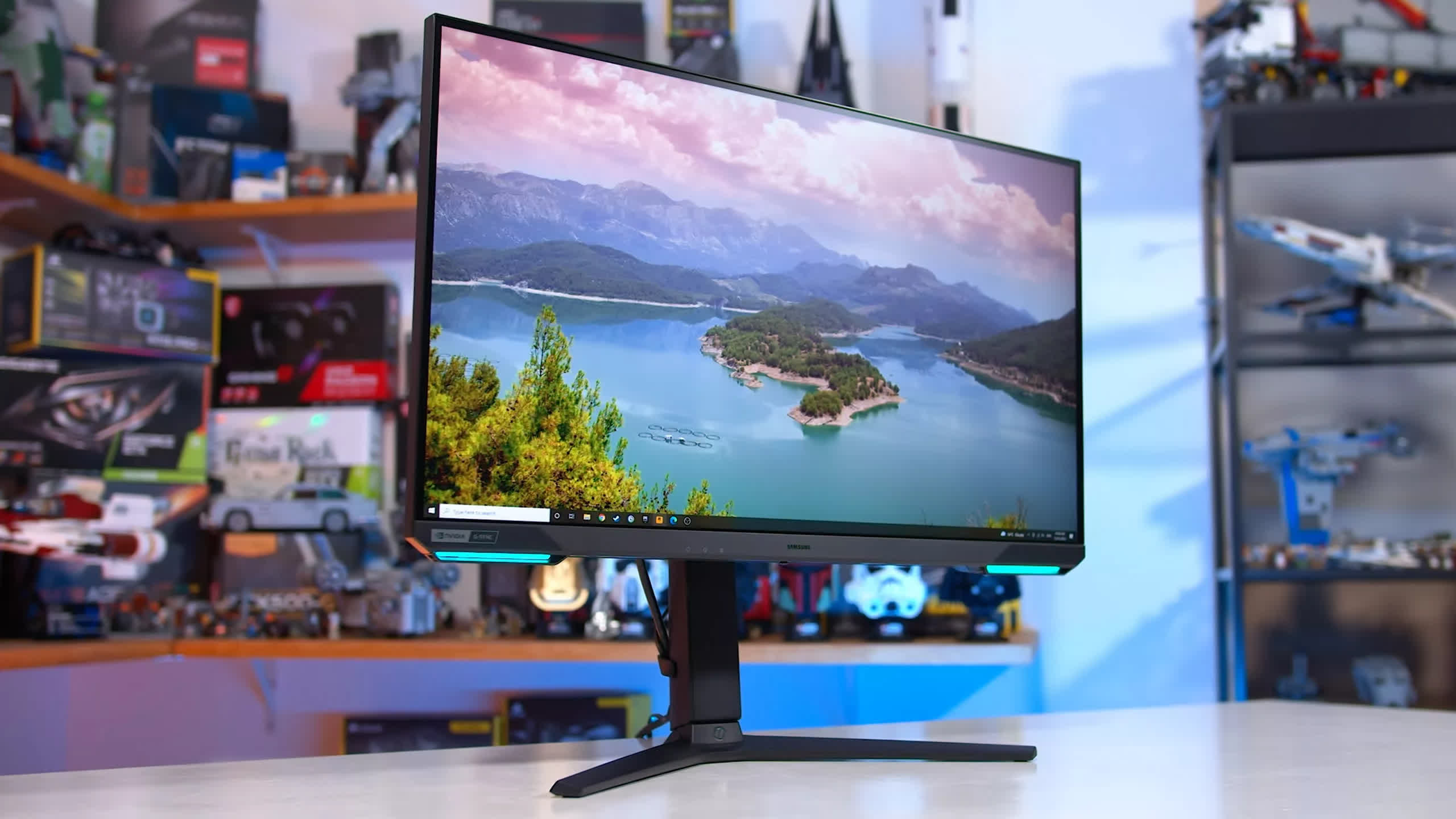
Those of you buying a 4K monitor to use with a PlayStation 5, the Gigabyte M28U is not the best choice because its HDMI 2.1 ports are limited to 24 Gbps, instead of the full 48 Gbps. In this case our recommendation goes to the Samsung Odyssey G7 S28, which does offer full HDMI 2.1 bandwidth.
The Odyssey G7 S28 is usually a little more expensive than the M28U, typically sitting at $700. Both monitors deliver very similar performance aside from HDMI 2.1, however recently we've found the Samsung going on sale for as low as $630. If the Samsung model is cheaper than the Gigabyte, we'd buy it instead.
The High-end Option: Eve Spectrum
The Eve Spectrum 4K is a really good 4K 144Hz monitor. It uses an LG panel, which has some benefits over the Innolux panel used in the Gigabyte M28U, such as a wider color gamut which is great for DCI-P3 usage and makes the display more versatile for both content creation and gaming.
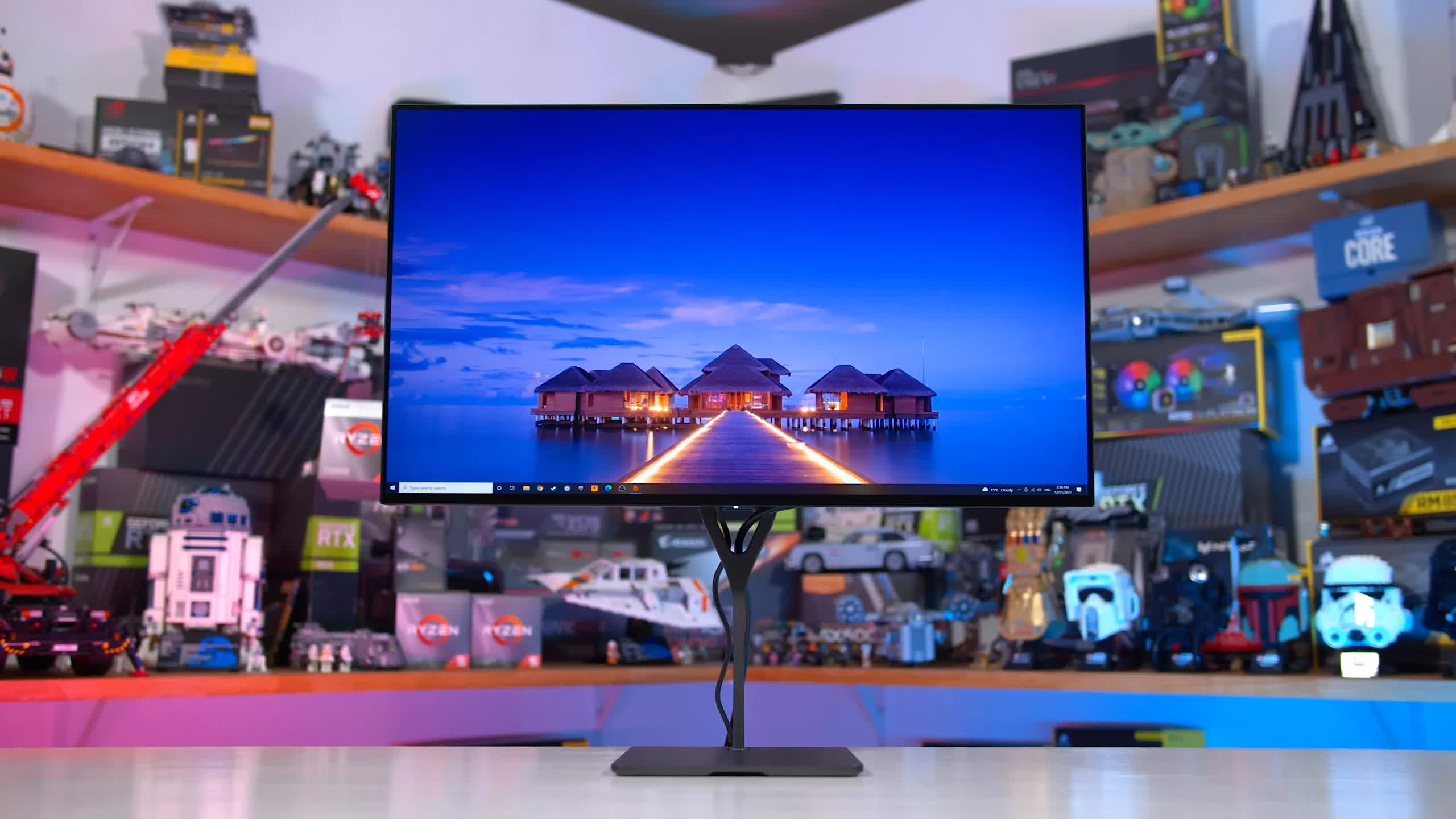
The Spectrum also has elite factory calibration, better than any other 4K display we've tested, plus more customization options like its highly tunable overdrive and backlight strobing controls.
Now, we wouldn't strongly recommend buying from Eve as a company. You can see our thoughts on why in our full Spectrum review, however since then Eve appears to be delivering on their promises and shipping monitors to customers in a more timely fashion. So we're more comfortable with a recommendation here than we were when we bought our review unit.
Do note that the Spectrum 4K is more expensive than competitors and it's hard to justify spending $900 (stand included), when the M28U and Odyssey G7 are available around $650 to $700 unless you specifically must have one of the additional features. We don't think the Spectrum offers an extra $250 of value over top competitors, but it's still worth considering if you want the best of the best.
Best 32-inch 4K Gaming Monitor
MSI Optix MPG321UR-QD 32"

If you're after a 32-inch 4K gaming monitor, unfortunately you'll have to accept the reality that these panels are still in their infancy. Thus performance is a step behind the 27-inch category, and of course, they're also more expensive. We've tested several options in this category and all have compromised performance in some ways. The best option we've seen so far, and the most versatile choice for a range of use cases, is the MSI Optix MPG321UR-QD ($900).
The MSI Optix's big strength is in color performance. It has a very wide color gamut, covering nearly all of the sRGB, Adobe RGB and DCI-P3 color spaces. This makes it an excellent choice as a dual-use monitor for gaming and content creation. You could flip this display into its built-in Adobe RGB mode for editing images in Photoshop, then play some games at 4K 144Hz when you're done. Or use the decent sRGB mode for watching YouTube content without oversaturation. On top of this, MSI includes a KVM switch, full-bandwidth HDMI 2.1, semi-HDR functionality, and decent brightness and contrast.
Where the MPG321UR-QD stumbles is in motion performance. The AU Optronics panel is decent at 144Hz, but on average across the entire refresh range it's not that fast, especially when compared to 27-inch models. MSI doesn't include variable overdrive which hurts performance, and leads to a last-gen IPS experience, although the backlight strobing mode is not too bad. While this is an obvious downside to the display, we've yet to test an alternative that offers anything meaningfully better.
Also consider: Gigabyte M32U
The direct alternative to the Optix MPG321UR-QD is Gigabyte's M32U, the larger sibling of the M28U. We haven't tested this exact model, but have tested the Gigabyte Aorus FI32U which is basically the same monitor just with a more expensive price tag, features and design. It's not as expensive as the MSI alternative, at $800, but it also isn't as good and still features several compromises.
The M32U, based on our testing of the FI32U which uses the same panel, is faster but features high levels of overshoot across the refresh range. This is because like with the MSI model, Gigabyte don't use variable overdrive on these displays, so performance is untamed at lower refresh rates. This leads to the blur trails of the MPG32UR-QD effectively just being replaced by inverse ghosting trails, even though with better tuning I believe this panel could be faster overall.
The M32U also doesn't have anywhere near as wide of a wide gamut panel, with not enough coverage of Adobe RGB to be useful. It lacks the versatility of the MSI variant for content creation and productivity work, even though it still looks pretty good in most categories. If you don't care about wide color gamut, it's still going to be fine and is a more affordable choice, but we're not sold on these 32-inch 4K panels yet and feel that another generation of iteration is required.
Based on the 32-inch displays we've tested, these larger variants tend not to perform as well as their smaller counterparts, usually featuring inferior response times. For many people this won't be a massive dealbreaker though.
In this category we can recommend the MSI Optix MPG321UR-QD. The MSI's big strength is in color performance. It has a very wide color gamut, covering nearly all of the sRGB, Adobe RGB and DCI-P3 color spaces. This makes it an excellent choice as a dual-use monitor for gaming and content creation. You could flip this display into its built-in Adobe RGB mode for editing images in Photoshop, then play some games at 4K 144Hz when you're done. Or use the decent sRGB mode for watching YouTube content without oversaturation. On top of this, MSI includes a KVM switch, full-bandwidth HDMI 2.1, semi-HDR functionality, and decent brightness and contrast.
Where the MPG321UR-QD stumbles is in motion performance. The AU Optronics panel used is decent at 144Hz, but across the entire refresh range it's not that fast on average, especially compared to 27-inch models. MSI doesn't include variable overdrive, which hurts performance, and leads to a previous-gen IPS experience, although the backlight strobing mode is not too bad. While this is a downside to the display, we've yet to test an alternative that offers anything meaningfully better.
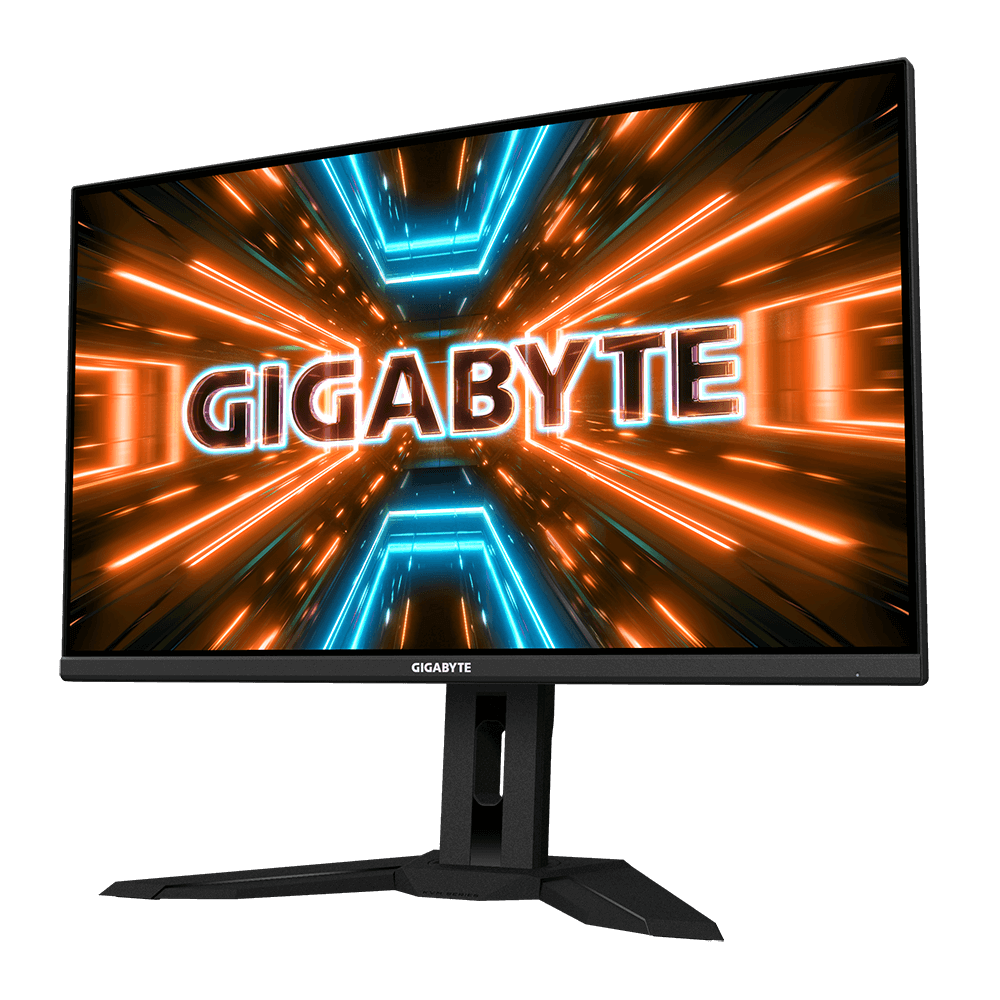
The alternate option to the MPG321UR-QD is the Gigabyte M32U, the larger brother to the M28U. We haven't tested this exact model, but have tested the Gigabyte Aorus FI32U which is essentially the same monitor on a different chassis. If you opt for the M32U you'll save about $120 compared to the MSI model.
The Gigabyte M32U/FI32U is faster than the MSI, but features high levels of overshoot on average across the refresh range. So it's the more gaming-focused choice, however the compromise is in color gamut with more limited coverage of P3 and Adobe RGB. It lacks the versatility of the MSI MPG321UR-QD, which we do believe is worth paying $120 more to get.
Best 4K HDR Monitor (reluctantly)
Asus ROG Swift PG32UQX 32"
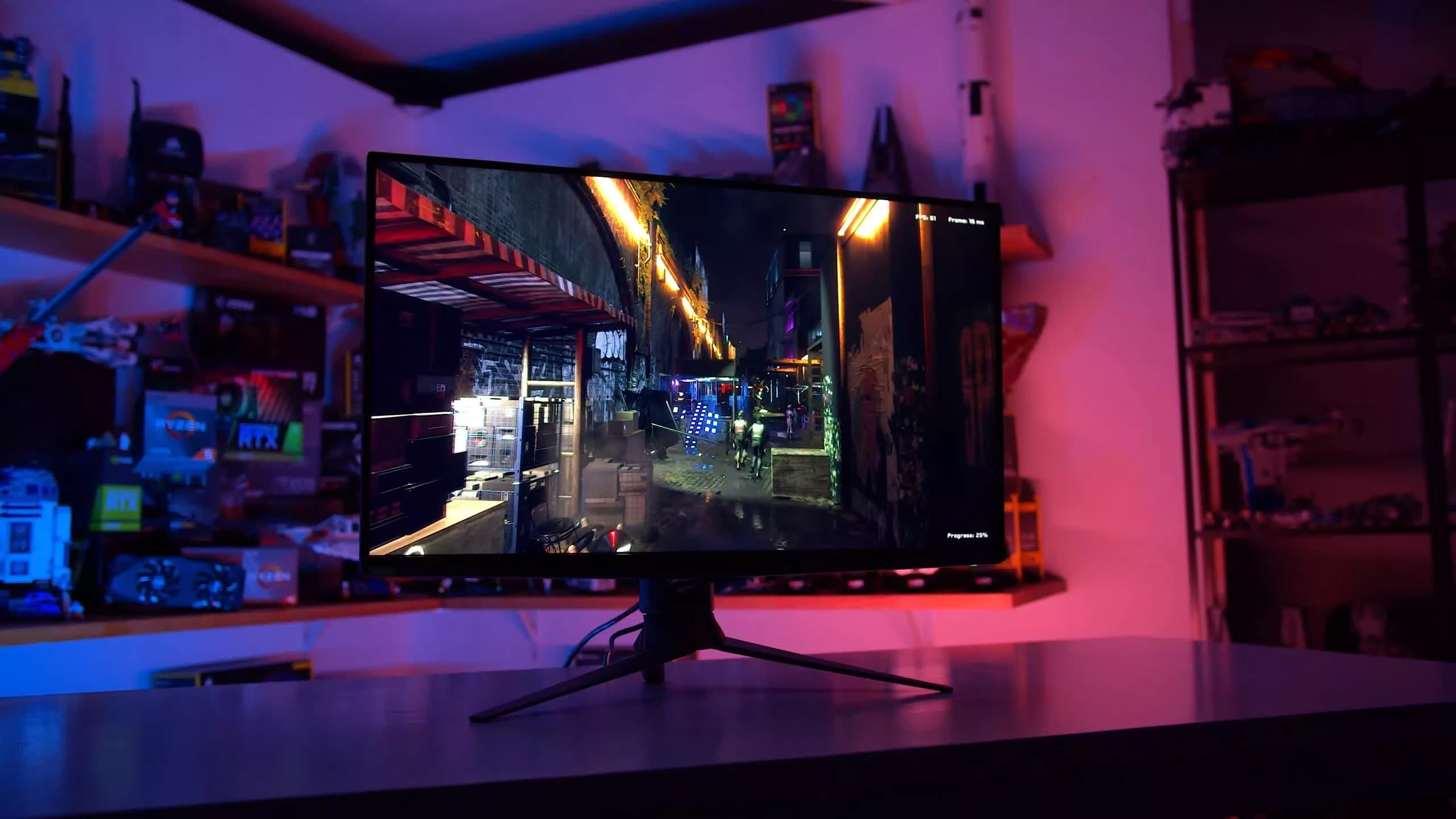
If you're after a 4K desktop monitor that can also do full, true HDR, you're going to have to pay thousands for that privilege. To be clear, any monitor that claims to support HDR and costs anything less than $1,500, it almost certainly doesn't support true HDR and therefore isn't worth buying at all for HDR gaming or content. Don't get fooled by marketing, because most companies are desperate to sell you any old junk and claim it's an HDR monitor.
There are very few true HDR gaming monitors on the market (with a size in the normal range for desktop monitor usage) in the 32-inch class or smaller. Older capable displays like the Acer Predator X27 and Asus ROG Swift PG27UQ have been discontinued at this point, further reducing the pool to a very small selection. And of those displays, the best one to get is the Asus ROG Swift PG32UQX.
When buying an LCD-based true HDR monitor, you need to look for a display with full array local dimming and lots of dimming zones. This allows the panel to provide the contrast required for displaying HDR content as intended.
The Asus ROG Swift PG32UQX succeeds in this area by providing an FALD backlight with 1152 individual zones, the highest currently seen on monitor-sized gaming LCDs, which makes the PG32UQX the best for HDR you can get. The PG32UQX is a 32-inch 4K 144Hz IPS monitor that packs G-Sync Ultimate certification, although it works with both Nvidia and AMD GPUs for adaptive sync.
While its backlight isn't totally free of blooming, in most HDR content it looks excellent, with extremely high brightness capabilities in excess of 1500 nits. Then for contrast, even in the worst cases, the screen is capable of higher-than-native contrast and deep blacks, which is what HDR is all about. Whether gaming or watching HDR videos, the PG32UQX really pops in its HDR mode and there are few other image quality issues to worry about.
While HDR is a huge strength of the PG32UQX and this monitor is basically unrivalled in the current market at its size, it's also a compromised monitor that has some fatal flaws outside of HDR performance. One is in the response times, there is no mistaking it: the PG32UQX is slow, with last-generation motion performance that can be blurry in some situations. Yes, it's nice to get a 144Hz refresh rate, but ideally the panel would be using more modern and faster IPS tech. The lack of competition means there's no faster alternative.
Because this monitor uses a G-Sync Ultimate module from Nvidia, there's no HDMI 2.1 support, so the excellent HDR experience is limited to PCs that can output over DisplayPort 1.4 with DSC. This would have been good to also use with today's consoles like the PlayStation 5 at above 60Hz, but nope, no HDMI 2.1 is a killer blow.
It's also expensive at $3,000. For the vast majority of gamers, it will be really hard to justify that price tag. So while this may be the "best" 4K HDR monitor in a regular sized panel, it's also among the few available and not great overall unless HDR is something you want and need. Hopefully next year we'll see more mini-LED gaming monitors that will compete in this segment.
If you're after a standard 4K monitor that can also do full, true HDR… well, that privilege is going to cost you. Today's 4K true HDR displays are much more expensive than regular SDR monitors shown above. We do expect more players to arrive in 2022, thanks to advancements in the OLED market we think there's a bit of pressure on the HDR monitor space and we expect to see new HDR monitor releases in the second half of the year.
If you absolutely must buy a 4K HDR gaming monitor today, the only viable option is the Asus ROG Swift PG32UQX, which costs a whopping $3,000. In many respects this is a good monitor: it's true HDR, it has 1152 zone mini-LED backlighting, high brightness in excess of 1500 nits, and a 144Hz refresh rate. For HDR gaming it looks pretty decent and delivers plenty of wow-factor.
But it's also got plenty of flaws. Response times are slow, much slower than other 4K monitors we've been talking about, it feels quite last generation in this area. It also lacks HDMI 2.1, so it's incompatible with the 4K 120Hz modes available in modern game consoles.
Ultimately, we don't think it's worth spending $3,000 on today's HDR hardware when it looks like the market will rapidly evolve and see new options launch soon. For example, the Acer Predator X32 FP will offer a 576-zone mini-LED backlight and is set to launch soon for $1,800. The AOC PD32M will bring 1152-zone backlighting and 1400 nits peak brightness for less than $2,000. Still expensive, but less outrageous.
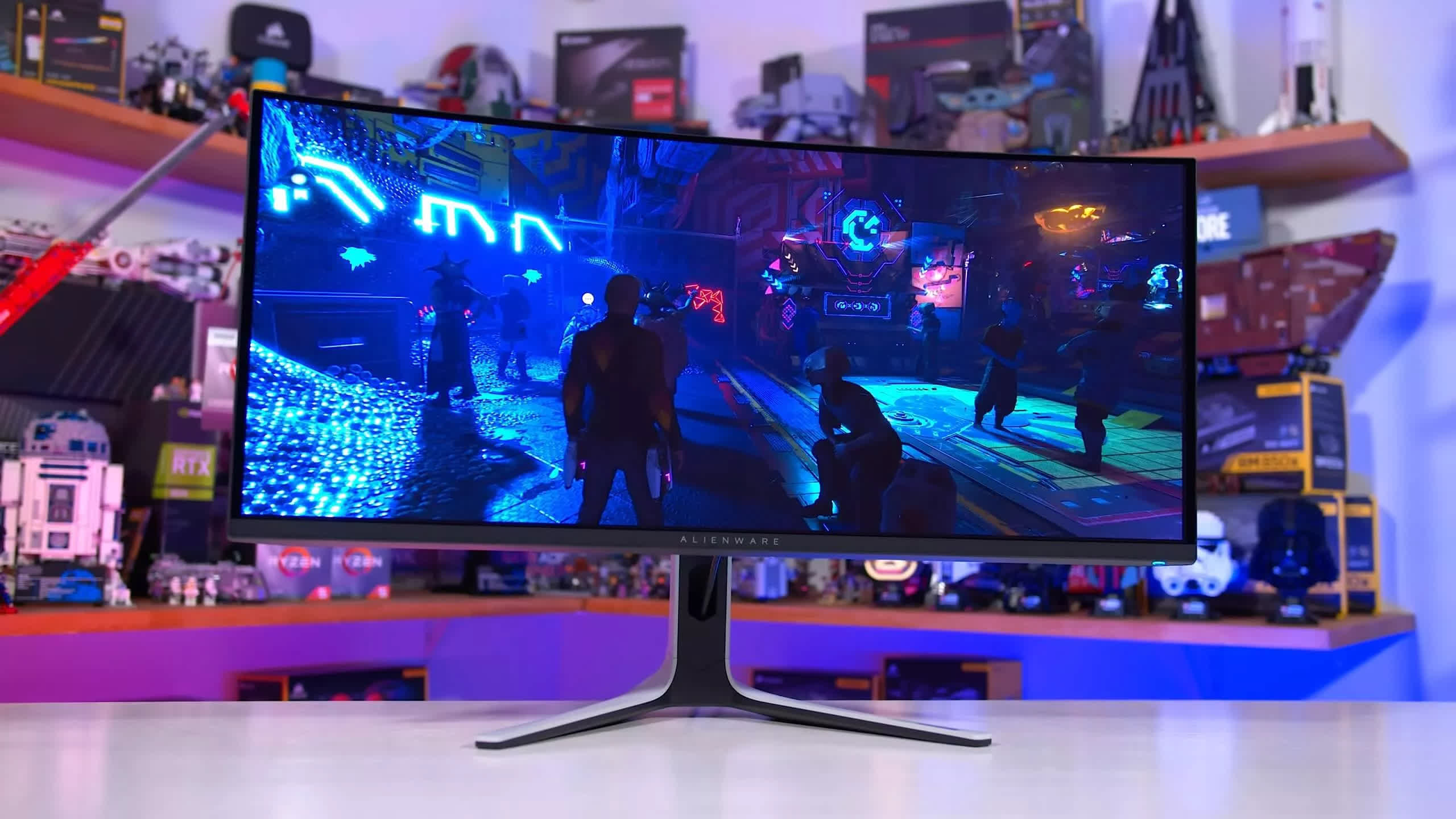
We know this is meant to be a 4K gaming monitor buying guide, but if we may recommend something totally different instead... the best HDR gaming monitor right now is the Alienware AW3423DW, which is a QD-OLED panel that delivers exceptional HDR performance, including deep blacks, per-pixel local dimming, and elite contrast ratios, as we'd expect for an OLED monitor. But, this is a 3440 x 1440 ultrawide monitor (175Hz), which is a different format and if you're set on 4K, this won't be for you. You can read our full review here. It's also just $1,300 and comes highly recommended.
Best Large Format 4K HDR Monitor
LG C1 OLED 48"

If you want the best HDR gaming experience on PC today, you should check out the 48" LG C1 OLED. Until we get smaller OLED panels, or more affordable true HDR gaming monitors, buying a TV like the LG C1 is the best way to go and is also the cheapest option. Currently the LG C1 is available for just $1,090, down from its usual $1,500 asking price, which puts it at nearly a third of the price of the Asus PG32UQX (see below) for what is largely a superior HDR experience.
The OLED panel has self-lit pixels, meaning it can deliver impressive black levels and an effective infinite contrast ratio with no blooming or haloing issues from LCD-based local dimming. This leads to astonishing HDR performance with a level of contrast that LCD monitors simply cannot achieve. The C1 is also strong in terms of gaming features, with low input lag for a TV, a 120Hz refresh rate, plenty of HDMI 2.1 ports and all sorts of other potentially useful processing and TV-related features. The price tag is also very tempting.
However, as we detailed in our full review of the C1, there are drawbacks to actually using this as a monitor. It's a massive display that requires a larger than normal viewing distance. The risk of permanent burn-in and low brightness levels makes it poorly suited to productivity and everyday desktop app usage; you should really only use the C1 for content consumption. It also only has HDMI 2.1 ports, so 4K 120Hz is limited to the newest graphics cards.
If you're desperate for an HDR gaming display, we'd probably choose the LG C1 for that purpose only (gaming, not desktop work), but if that's not your case, I would genuinely consider buying something else and waiting for the HDR gaming monitor ecosystem to mature.
Beware of "HDR" monitors?
There aren't many true HDR gaming monitors on the market today. The vast majority of displays that you see advertising "HDR" capabilities don't have any meaningful HDR hardware, and therefore are fake HDR monitors. To give you a hint: if the monitor doesn't tell you the amount of local dimming zones, or if the number of zones isn't in the hundreds, don't bother buying it for its so-called HDR capabilities, because the reality is that the HDR experience will be poor at best.
With that said, there are a couple of true HDR displays on the market. One of them is the Samsung Odyssey Neo G9 we mentioned before. With the firmware fix applied, the Neo G9 is capable of great HDR, through its 2,048 zone full array local dimming backlight and respectable level of brightness. It's also a strong performer overall with its superwide screen, 240Hz refresh rate and 1440p-class resolution. The same downsides over Samsung's quality control also apply, so buy it with caution.
If you don't want an ultrawide, the best 16:9 aspect ratio HDR gaming monitor is very expensive in the Asus ROG Swift PG32UQX. It's also, all things considered, not that amazing due to its slow response time performance by modern standards, something I would have expected to be improved given its monstrous $2,900 price tag.
It also lacks HDMI 2.1, limiting its compatibility with modern 4K HDR capable gaming consoles like the PlayStation 5. However the HDR experience is undoubtedly strong thanks to peak brightness that exceeds 1600 nits, 1152 zone full array local dimming backlight and very wide color gamut. It's also a decent size at 32-inches, it uses IPS technology and features a 144Hz refresh rate. It's an expensive monitor if you have the cash to burn.
If you want the best HDR experience on PC and don't want to pay $3,000 for the PG32UQX – and who could blame you – then by far the best choice is to get a 48-inch OLED TV. Although this is clearly not a monitor in terms of size and it won't be suitable for all setups, the value proposition offered by OLED, as well as its performance in HDR games and content, totally destroys the LCD-based alternatives on the market today.
The benefits to OLED are based around its self-lit pixel technology. Because each pixel is individually lit, they can also be fully switched off to display black, leading to deep blacks, detailed shadows, and infinite contrast ratios. This is perfect for HDR where contrast is so important. With an OLED panel you don't get blooming due to low backlight zone counts, and this looks stunning in practice. Once you've used an OLED it's hard to go back.
The nature of OLEDs is also conducive to extremely fast response times, far faster than any modern LCD. Motion performance at the same refresh rate as an LCD is in the range of 5x better or more, and this allows for backlight strobing (or black frame insertion) that smokes what LCDs can do in terms of clarity. Today's 48-inch OLEDs can reach 120Hz refresh rates which isn't the fastest going around, but sufficient for a smooth, high refresh experience at 4K.
We've tested two 48-inch OLEDs for gaming and PC use, and our recommendation is to get the LG C1 OLED, or its very similar brother the LG CX OLED, depending on pricing and availability in your region. The C1 is a feature-rich TV with outstanding image quality, motion clarity, and HDR performance which is worth its asking price provided you have enough space for the large panel.
The LG C1 typically sells for around $1,500 which is not inexpensive, but not a bad value for what you're getting; it's half the price of the PG32UQX and is better in almost every way. Just make sure you have an HDMI 2.1 capable GPU from the latest Nvidia or AMD GPU series, as there's no DisplayPort on this TV - although the HDMI 2.1 ports are full bandwidth and support Dolby Vision, so the C1 is compatible with lots of other devices including media players and game consoles.
We have no trouble recommending the LG C1 to someone using it for content consumption or gaming, but there are some drawbacks that are worthy of mention. The first is the risk of burn-in, which is not that relevant for viewing mixed content, but is likely to happen if you are using the C1 as a desktop monitor. Static content like web browsers, the Windows taskbar, and other desktop apps are not ideal for OLED panels, and some of the panel protection features are ineffective or annoying for desktop use, like the automatic brightness limiter and pixel shifter.
These OLED panels haven't been designed for desktop use. Their RGBW subpixel layout is not great for text clarity, the massive size is inconvenient for a lot of setups, and brightness is low compared to today's LCDs (though acceptable for HDR content in the HDR mode). Again, amazing for content consumption, not great for desktop users.
If you truly want the best 4K HDR experience on PC and don't want to go with any of our previous options – don't want to spend $3,000 on the PG32UQX, don't want a QD-OLED ultrawide, and don't want to wait – then the next best choice is to step up to a larger format gaming monitor. And right now there's no better choice than an OLED TV.
The benefits to OLED are all based around self-lit pixel technology. Because each pixel is individually lit, they can also be fully switched off to display black, leading to extremely deep blacks, detailed shadows and infinite contrast ratios. This is perfect for HDR, as contrast is so important; with an OLED panel you don't get blooming due to low backlight zone counts, and this looks stunning in practice. Once you've used an OLED, it's hard to go back.
The nature of OLEDs is also conducive to extremely fast response times, far faster than any modern LCD. Motion performance at the same refresh rate as an LCD is in the range of 5x better or more, and this allows for backlight strobing (or black frame insertion) that smokes what LCDs can do in terms of clarity. Today's 42-inch and 48-inch OLEDs can reach 120Hz refresh rates which isn't the fastest going around, but sufficient for a smooth, high refresh experience at 4K.
Our recommendations in this segment are LG C-series OLED TVs. We've yet to test the newer C2 series, hopefully we'll be getting to that soon, but the C1 series in a 48-inch size is very impressive. The LG C2 brings with it an even smaller variant, the 42-inch model, which we feel could be a lot more suited to PC gaming and desktop use – and it should deliver similar performance to the 48-inch models we've already tested.
The 48-inch LG C1 can be found for as little as $1,000, which is great value for what it offers. If that sort of size is suitable for you, we'd have no hesitation jumping in to grab one. If you're more interested in the new 42-inch C2 model, they're just coming to market now in some countries, with an MSRP of $1,400, which is still a decent price if performance holds up.
While we'd have no trouble recommending OLEDs to someone using it for content consumption or gaming, there are some drawbacks that are important to mention. The first is the risk of burn-in, which is not that relevant for viewing mixed content, but is likely to happen if you are using the C1 or C2 as a desktop monitor. Static content like web browsers and other desktop apps are not ideal for OLED panels, and some of the panel protection features are ineffective or annoying for desktop use, like the automatic brightness limiter and pixel shifter.
These OLED panels also haven't been designed for desktop use. Their RGBW subpixel layout is not great for text clarity, the size might be inconvenient, and brightness is very low compared to today's LCDs (though acceptable for HDR content in the HDR mode). Again, great for content consumption, not so great for desktop users.
